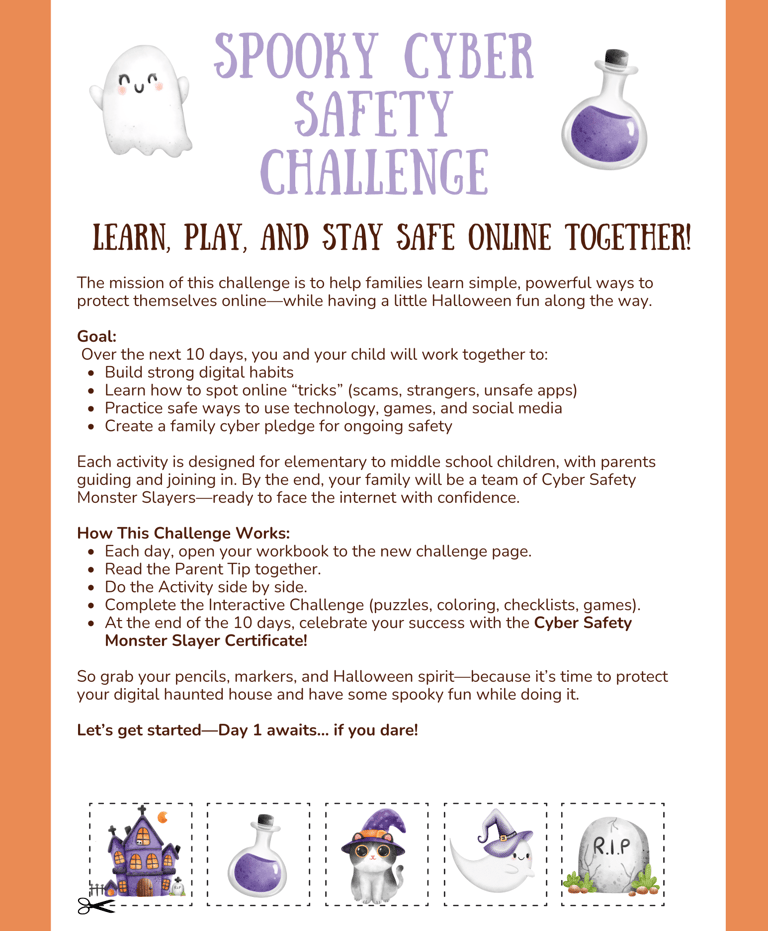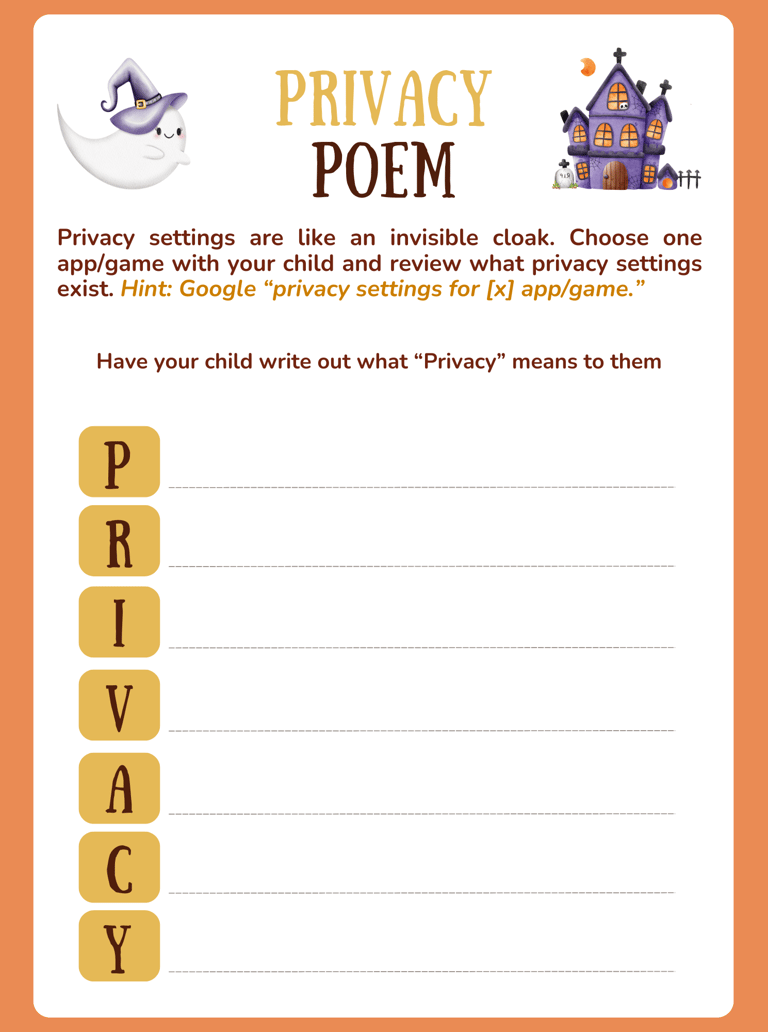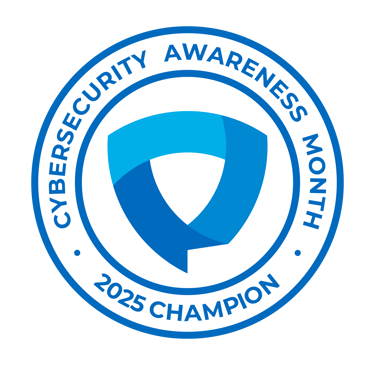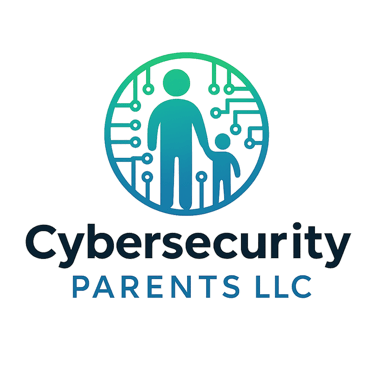Day 3 of the Spooky Cyber Safety Challenge
10 days of fun and safety for families, today's topic: PRIVACY
Kae David & Chad Rychlewski
10/3/20252 min read


Teaching Kids About Privacy: A Fun Halloween Activity for Families
When it comes to online safety, privacy settings are one of the most powerful yet overlooked tools we have. For kids especially, learning how to manage privacy settings early builds lifelong digital safety habits.
The challenge? Privacy often feels abstract and hard to explain. That’s why turning it into a hands-on activity can make all the difference.
Privacy is Like an Invisible Cloak
Just like a Halloween costume can disguise your identity, privacy settings act as an invisible cloak online. They help protect personal information from strangers, advertisers, and even hackers.
By adjusting privacy settings in apps and games, children can control:
Who can see their profile
What personal details are shared
Who can contact them
How much data is collected in the background
The Privacy Poem Activity
Here’s a simple family exercise that blends creativity with cybersecurity:
Choose an app or game your child uses.
Together, Google “privacy settings for [app/game]” to see what options exist.Review the settings as a team.
Show your child how to toggle privacy controls, and explain why these settings matter.Write a Privacy Poem.
Using the word “PRIVACY” as an acrostic, have your child write what privacy means to them. For example:Protecting my information
Remembering not to overshare
In control of who sees my posts
Valuing my personal space
Always checking my settings
Choosing what to share wisely
You can only see what I allow
This activity helps children not only understand privacy, but also articulate it in their own words.
Why This Matters
Teaching kids to recognize and adjust privacy settings empowers them to take ownership of their digital world. Instead of simply telling them to “be careful online,” you’re giving them practical tools and helping them understand why it matters.
As parents, the goal is not just to supervise our children’s online activity, but to raise confident digital citizens who can navigate the internet safely and responsibly.




Cybersecurity Parents LLC
Empowering families to navigate the digital world.
Email us
info@cybersecurityparents.com
© Cybersecurity Parents LLC 2025. All rights reserved.


All content, materials, and sessions provided by Cybersecurity Parents LLC are intended for informational and educational purposes only.
They do not constitute legal, financial, or cybersecurity advice. Parents, educators, and participants should use their own judgment and, when necessary, consult with a qualified professional. By participating in our events, reading our materials, or using our resources, you acknowledge and agree that Cybersecurity Parents LLC is not liable for any actions you take or outcomes resulting from the use or misuse of our content.
